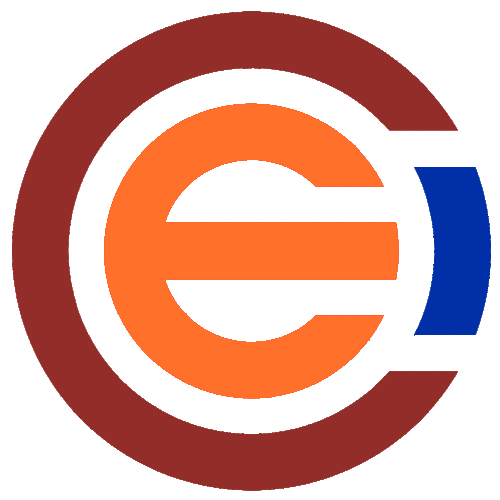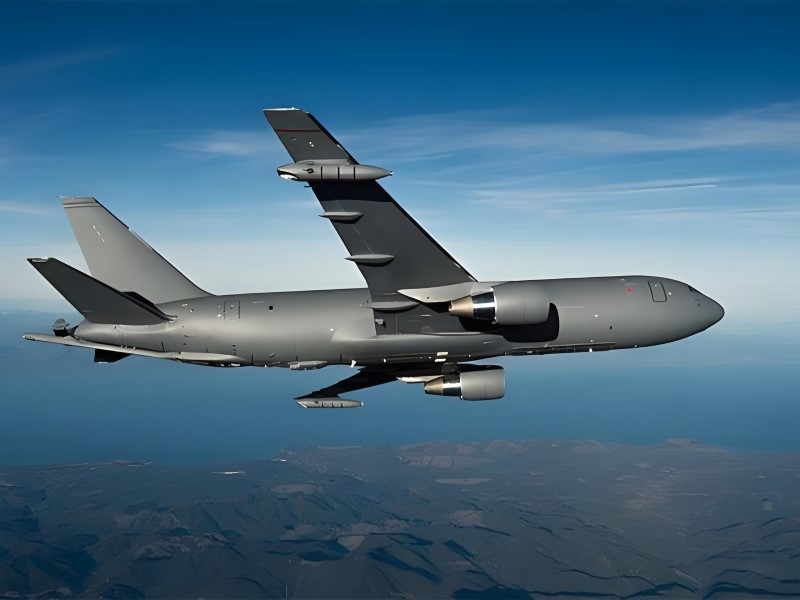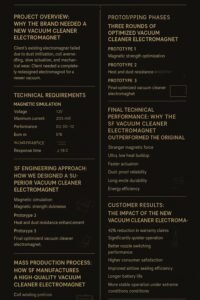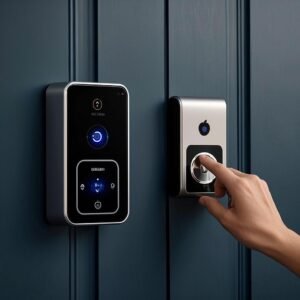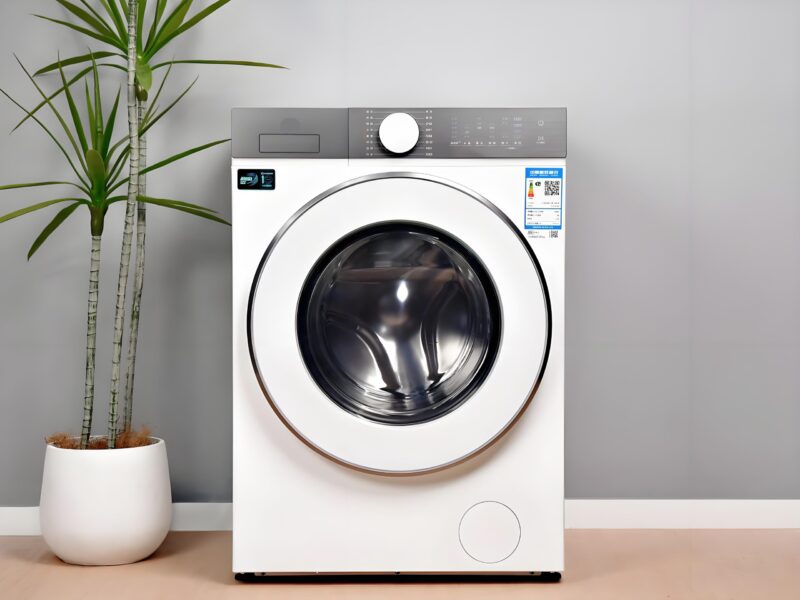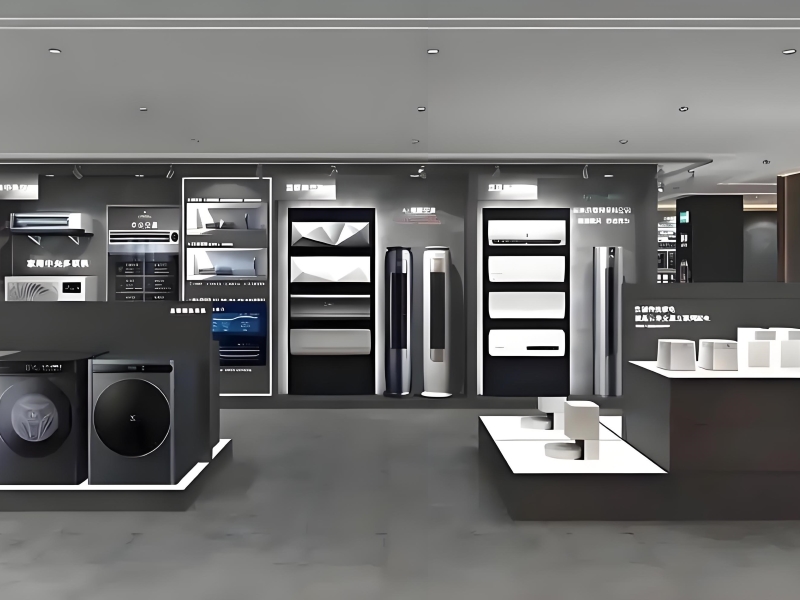Last Updated on 2025-09-04 by SolenoidFactory
Aircraft doors are among the most safety-critical components in aviation. They must withstand extreme environmental conditions, rapid pressure changes, and rigorous operational demands—all while ensuring the security of passengers and crew. Traditional hydraulic and mechanical door systems have long dominated this space, but advancements in electromagnetic technology are revolutionizing how aircraft doors operate. From lightweight, energy-efficient locking mechanisms to intelligent emergency release systems, electromagnets are setting new standards in aviation safety and reliability.
As a professional electromagnet manufacturer, we explore the transformative applications of electromagnetic systems in aircraft door control, the technical challenges they address, and their role in shaping the future of aviation engineering.
1. The Science of Electromagnetic Door Control
1.1 How Electromagnets Enhance Aircraft Door Systems
Electromagnets convert electrical energy into precise mechanical force through controlled magnetic fields. In aircraft doors, they enable:
- Instant Actuation: Millisecond response times for locking/unlocking.
- Fail-Safe Operation: Spring-assisted or redundant mechanisms to ensure functionality during power loss.
- Adaptive Control: Integration with flight control systems to adjust door behavior based on altitude, pressure, or emergency scenarios.
1.2 Key Components in Electromagnetic Door Systems
- Solenoid Actuators: Generate linear or rotational motion to engage door locks.
- Latching Magnets: Hold doors securely during flight using permanent or electro-permanent designs.
- Sensors and Controllers: Monitor door status and synchronize with the aircraft’s avionics.
2. Core Applications in Aircraft Door Control
2.1 Cabin Door Locking Mechanisms
Aircraft cabin doors require robust locking systems to maintain cabin pressure and prevent accidental openings. Electromagnetic locks provide:
- Pressure-Sealing: Electromagnets apply uniform force to door seals, ensuring airtight closure even at 40,000 feet.
- Lightweight Design: Replacing hydraulic systems with electromagnets reduces door weight by up to 30%, improving fuel efficiency.
Case Study: For a next-gen narrow-body aircraft, we developed a titanium-core solenoid lock that withstands 10,000 psi differential pressure while weighing 50% less than traditional locks. The system achieved FAA certification and is now deployed in over 500 aircraft globally.
2.2 Emergency Exit Door Systems
Electromagnets enable rapid, automated deployment of emergency exits during evacuations:
- Instant Release: A single electrical pulse disengages locks, allowing doors to deploy inflatable slides in <3 seconds.
- Redundancy: Dual-coil solenoids ensure operation even if one coil fails.
Example: During testing, an electromagnetic exit door system achieved a 100% success rate in simulated emergency scenarios, outperforming mechanical systems prone to jamming.
2.3 Cargo Door Automation
Freighter aircraft rely on electromagnets for heavy cargo door operations:
- Motorized Control: Electromagnetic actuators adjust door angles for loading/unloading, reducing manual labor.
- Load Sensing: Integrated Hall-effect sensors detect obstructions and halt movement to prevent damage.
2.4 Flight Deck Door Security
Reinforced electromagnetic locks protect flight decks from unauthorized access:
- Biometric Integration: Locks engage/disengage via fingerprint or retinal scans.
- Anti-Tamper Alerts: Magnetic field sensors trigger cockpit alarms if tampering is detected.
3. electromagnets Technical Challenges and Solutions
3.1 Extreme Environmental Conditions
Challenge: Aircraft doors face temperatures from -65°C (at altitude) to +70°C (on tarmac), humidity, and vibration.
Solutions:
- Cryogenic-Grade Materials: Austenitic stainless steel coils and armatures resist thermal contraction.
- Vibration Damping: Silicone-encapsulated solenoids absorb shocks from turbulence or landing impacts.
3.2 Power Reliability
Challenge: Power fluctuations or failures during flight could compromise door security.
Solutions:
- Energy Storage Modules: Supercapacitors provide backup power to locks for 30+ minutes.
- Latching Electromagnets: Use permanent magnets to maintain locked states without continuous power.
3.3 Electromagnetic Interference (EMI)
Challenge: EMI from onboard electronics disrupts solenoid operation.
Solutions:
- Shielded Enclosures: Mu-metal housings block external EMI.
- Frequency Modulation: Controllers operate solenoids at non-conflicting frequencies.
3.4 Certification and Compliance
Challenge: Meeting aviation standards like FAA Part 25, EASA CS-25, and DO-160 (Environmental Testing).
Solutions:
- Redundant Systems: Dual-coil actuators and fault-tolerant controllers meet SIL 3 (Safety Integrity Level) requirements.
- Accelerated Life Testing: Simulate 50,000 flight cycles to validate durability.
4. Innovations in Electromagnetic Door Technology
4.1 Smart Doors with IoT Integration
Next-gen aircraft doors use embedded IoT sensors to:
- Predict Maintenance Needs: Monitor coil resistance and armature wear, alerting crews before failures occur.
- Sync with Flight Phases: Automatically lock doors during takeoff/landing and adjust seals during pressurization.
Case Study: An airline reduced door-related delays by 70% after adopting IoT-enabled cargo doors that self-diagnosed seal degradation.
4.2 Shape-Memory Alloy (SMA) Actuators
SMAs combined with electromagnets enable self-adjusting locks:
- Thermal Compensation: SMAs counteract thermal expansion/contraction, maintaining seal integrity across temperatures.
4.3 Additive Manufacturing
3D-printed solenoid cores and lightweight frames optimize strength-to-weight ratios:
- Topology Optimization: AI-designed structures reduce weight by 40% while maintaining load capacity.
4.4 Hydrogen-Powered Aircraft Adaptations
For hydrogen-fueled aircraft, electromagnets are being redesigned with:
- Explosion-Proof Housings: Prevent sparks in hydrogen-rich environments.
- Non-Magnetic Alloys: Titanium or aluminum bodies to avoid interference with cryogenic fuel systems.
5. Case Studies: Electromagnets in Action
5.1 Case Study 1: Wide-Body Aircraft Emergency Exits
A manufacturer sought to replace hydraulic emergency door systems with electromagnetic solutions. Our design featured:
- Dual Redundant Coils: Ensured 100% reliability in failure-mode tests.
- Low-Power Actuation: Operated on 28V DC, compatible with aircraft electrical systems.
The system reduced evacuation time by 25% and cut maintenance costs by 60%.
5.2 Case Study 2: Military Transport Cargo Doors
A military contractor needed cargo doors resistant to sand, dust, and EMP (electromagnetic pulse) attacks. We delivered:
- IP69K-Rated Actuators: Withstood high-pressure washdowns and desert conditions.
- EMP-Hardened Controllers: Shielded circuits survived 50 kV/m pulse tests.
5.3 Case Study 3: Regional Jet Cabin Doors
A regional jet manufacturer prioritized weight reduction. Our carbon-fiber solenoid housings and aluminum cores cut door system weight by 120 kg per aircraft, saving 1.2 tons of fuel annually per plane.
6. Future Trends in Aircraft Door Electromagnets
6.1 Autonomous Door Systems
AI-powered doors will:
- Auto-Adjust to Passenger Flow: Use cameras and sensors to optimize boarding/deboarding.
- Predict Turbulence Responses: Pre-lock doors before severe turbulence events.
6.2 Energy-Harvesting Locks
Kinetic energy from door movements will recharge backup batteries, enhancing sustainability.
6.3 Quantum Magnetic Sensors
Quantum-based sensors will detect microscopic door seal leaks, improving pressurization efficiency.
7. Selecting Electromagnetic Solutions for Aviation
7.1 Key Selection Criteria
- Compliance: FAA/EASA certifications and DO-160 testing.
- Weight: Target <1.5 kg per actuator for narrow-body doors.
- Cycle Life: Minimum 50,000 operations without performance degradation.
7.2 Customization for OEM Needs
As a manufacturer, we offer:
- Material Customization: Titanium, Inconel, or composites for specific environments.
- Voltage Compatibility: 28V DC, 115V AC, or hybrid systems.
- Rapid Prototyping: 3D-printed models for wind tunnel and pressure testing.
Electromagnets—Elevating Aviation Safety and Efficiency
Electromagnetic technology is redefining aircraft door control, merging unparalleled precision with the rigorous demands of aviation safety. From ensuring cabin pressure integrity to enabling split-second emergency responses, these systems are proving indispensable in modern aircraft design.
As the aviation industry advances toward greener, smarter, and more autonomous operations, electromagnets will play a pivotal role. For OEMs and airlines, partnering with an experienced electromagnet manufacturer is not just a technical decision—it’s a strategic investment in the future of flight.
In an industry where every gram and every millisecond counts, electromagnets are soaring to new heights—proving that even the smallest magnetic force can have a monumental impact on global aviation.
About SF electromagnets factory
Shengfeng Electromagnet Co., Ltd. was established in 2015 and is located in the Xiansha Industrial Park with beautiful scenery and convenient transportation. The company covers an area of 16000 square meters and has modern production plants, advanced production equipment and a high-quality technical team. Since its establishment, we have always adhered to the corporate philosophy of “innovation, quality, and service”, focusing on the research and development and production of electromagnets, constantly promoting product upgrades and technological progress, and providing customers with the best quality products and services.
Why choose SF electromagnet
HIGH END QUALITY:As the best solenoid electromagnet manufacturer in china, our QC team will ensure every single product you receive are best quality. We have professional quality testing machine.
PRODUCT DESIGN:Our sampling department has complete process of making drawings into reality. We also improve your product design based on our years of working experience.Tell us what you think.
STABLE DELIVERY TIME:As the best electromagnet manufacturer & supplier,we have sufficient manufacturing capacity, big orders won’t beat us, we can still deliver the order for you in time.
BEST PRICE:We are source factory of electromagnet and the best solenoid manufacturer in China, that’s why we can provide high quality bags with best price.
PRECISE MANAGEMENT:Nothing can be achieved if we don’t implement precise management. We are a company with complete management system.
7-24 SERVICE:As the best solenoid manufacturer, 24-7 immediate response: We’ll receive your feedback to make us a better supplier. Contact WhatsApp +86 18902611680
FAQs of electromagnet
We are a Chinese top electromagnet manufacturer and our factory is located in Dongguan. Welcome to visit our factory!
We pecialize in the design and production of high quality electromagnet,solenoid valve,such as rotary solenoid, bistable solenoids, latching solenoids, open frame solenoids, tubular solenoids, self-holding solenoid
•Of course, usually we will provide free samples, and you only need to cover the freight. For custom electromagnet samples, pls send your requirements to us for checking the sample cost.
• It takes about 7 days for sample production.
Yes, we provide free design services, structural design and simple graphic design.
Sure. We can do any electromagnet with your design. Now we open a ODM solenoid which is for small quantity from 100pc to 500pc,but you can still have your own logo.
Depending on the order quantity and production details, it will take about 15 to 20 days.
Always a pre-production sample before mass production; Always final Inspection before shipment
• Power,usage,size, material, quantity, shipping destination, etc.
• You can also just tell us your requirements and we will recommend products to you.
• By sea, by air or by express.
• If you have your own freight forwarder in China, it is the ex-factory or FOB price.
•CFR or CIF, etc., if you need us to ship on your behalf.
• DDP and DDU can also be used.
• More choices, we will consider your choices.
• The price is determined by the quantity, material, processing method, size and other factors. In addition, due to our continuous
technological innovation, the prices of some of our products are extremely competitive, please contact us to quote.
